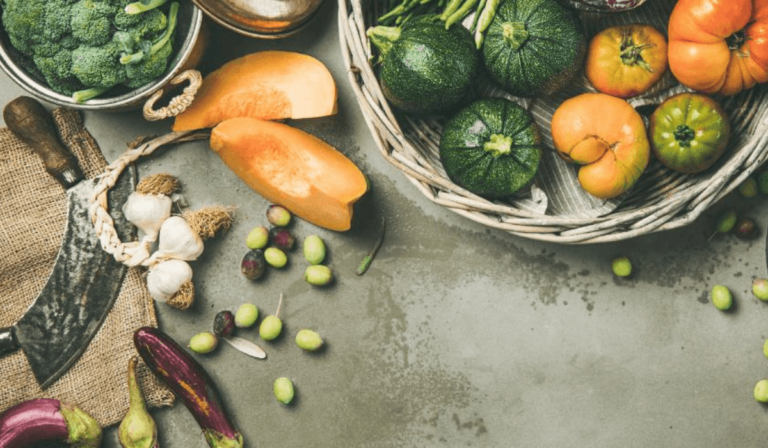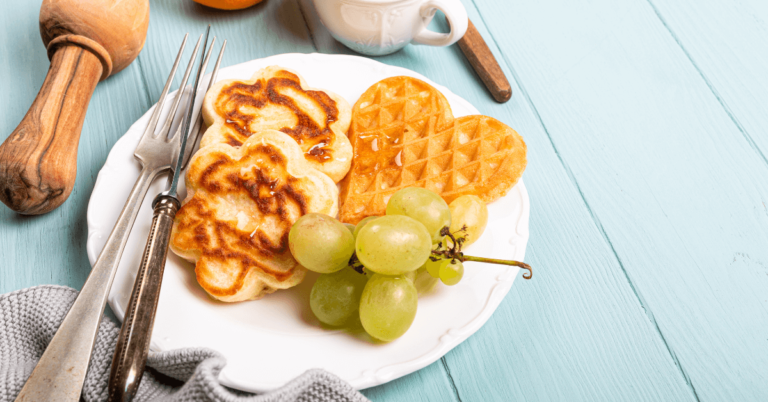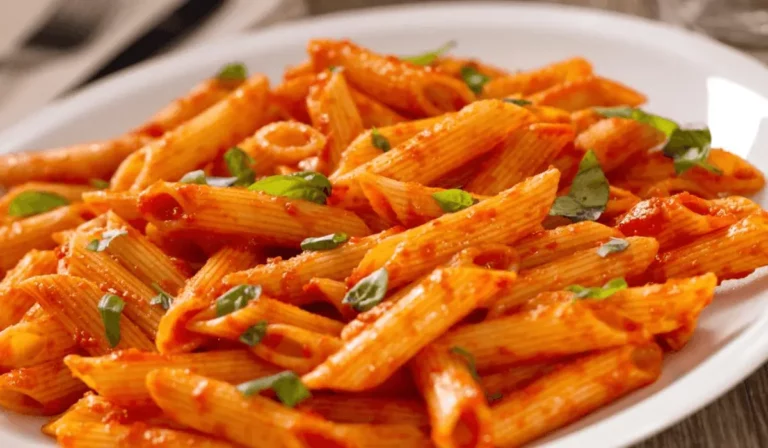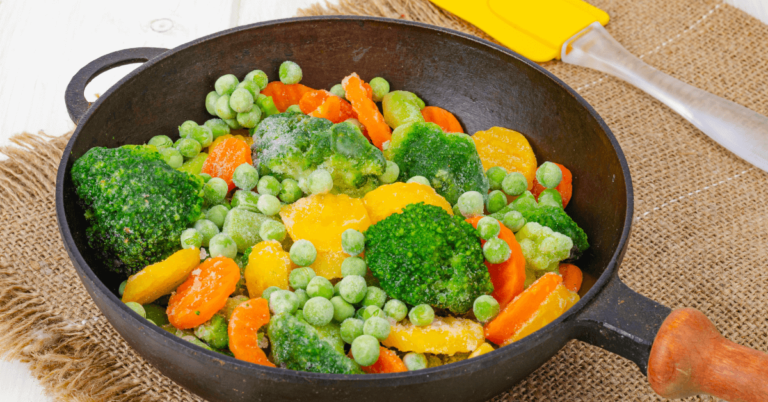Part 1: Introduction
Ever wondered, “Is muffin mix the same as cake mix?” Well, you’re not alone! This question is a hot topic in the baking world, stirring up curiosity among both amateur and expert bakers. Let’s sift through the facts and find out what really sets these two mixes apart.
A Dash of History
Baking mixes have been revolutionizing our kitchens since the early 1900s. Initially a symbol of luxury and modernity, they’ve now become a pantry staple. They offer a quick and convenient way to whip up delicious treats, but there’s more to these mixes than meets the eye.
The Heart of Baking Mixes
Both muffin and cake mixes aim to delight our taste buds, but they’re not quite the same. Is it the texture, the sweetness, or something else that differentiates them? We’re about to find out!
In this article, we’ll knead through the details, exploring the unique characteristics of each mix. Understanding these differences isn’t just about following recipes; it’s about mastering the art of baking. So, let’s get ready to mix things up and discover the secrets behind these popular baking staples! Stay tuned for the next part, where we’ll dive into the world of muffin mixes.
Part 2: Understanding Muffin Mix
Now, let’s turn our attention to the world of muffin mixes. What exactly goes into these mixes, and how do they differ from their cake mix cousins?
The Composition of Muffin Mix
Muffin mixes typically contain flour, sugar, baking powder, and salt. But here’s the twist: they often have a higher proportion of flour to sugar compared to cake mixes. This results in a denser, less sweet product. Also, the leavening agents in muffin mixes are calibrated to create a quick rise and a more robust structure, perfect for holding fruits, nuts, or chocolate chips.
Types of Muffin Mixes Available
From classic blueberry to decadent chocolate chip, the variety of muffin mixes is astounding. Each type brings its own unique flavor and texture to the table. Whether you’re looking for gluten-free options or something with a bit of whole grain, there’s a muffin mix out there for you.
Popular Uses of Muffin Mix
Muffin mixes aren’t just for muffins! They’re incredibly versatile. Ever thought of making banana bread or coffee cake with a muffin mix? You’d be surprised at how well these mixes adapt to different recipes, offering a delightful twist to traditional baked goods.
In summary, muffin mixes are a powerhouse of versatility in the baking world. They provide a sturdy, flavorful base that can be jazzed up in countless ways. As we move forward, we’ll compare these characteristics to cake mixes, helping you understand when and how to use each type effectively. Stay tuned for the next part, where we’ll explore the sweet and fluffy world of cake mixes!
Part 3: Understanding Cake Mix
Now, let’s whisk into the world of cake mixes. These mixes are the go-to for many bakers looking to create sweet, fluffy treats. But what sets them apart from muffin mixes?
The Sweet Blend of Cake Mix
Cake mixes are all about achieving that perfect, light, and airy texture. They usually have more sugar and less flour than muffin mixes, which gives cakes their signature sweetness and softness. Plus, they often include special ingredients like emulsifiers to make sure your cake rises beautifully and has that smooth, even crumb.
A Palette of Cake Mix Flavors
The variety of cake mixes is like a rainbow in the baking aisle. From classic vanilla to rich red velvet, there’s a flavor for every occasion. Some mixes are even tailored for specific types of cakes, like angel food or devil’s food, ensuring you get just the right texture and taste.
Cake Mix Beyond Cakes
Think cake mixes are just for cakes? Think again! They’re super versatile. You can whip up cupcakes, transform them into cake pops, or even bake a batch of quick cookies. It’s all about getting creative and experimenting with these sweet mixes.
In short, cake mixes are your ticket to easy, delightful desserts. They open up a world of baking possibilities, from traditional cakes to fun, inventive creations. Next up, we’ll compare these mixes to muffin mixes, shedding light on their unique qualities. Stay tuned for our next part, where we dive into a detailed comparative analysis!
Part 4: Comparative Analysis
Let’s put muffin and cake mixes under the microscope and see what really sets them apart. It’s not just about choosing between two types of treats; it’s about understanding their unique baking characteristics.
Nutritional Showdown
When it comes to nutrition, cake mixes usually pack more sugar, giving them that irresistible sweetness. Muffin mixes, with their higher flour content, can be a bit more nutritious, sometimes even featuring whole grains.
A Tale of Textures
Texture is where you’ll notice a big difference. Muffins are denser and heartier, thanks to their ingredient ratios. They’re perfect for mixing in fruits or nuts. Cakes? They’re all about being light, fluffy, and moist, a result of more sugar and special ingredients in the mix.
The Rise Factor
The leavening agents in these mixes do different jobs. Muffin mixes are designed for a quick, strong rise, giving them a more pronounced texture. Cake mixes, however, aim for a gentler rise, leading to that soft, airy crumb we all love in cakes.
In a nutshell, muffin and cake mixes might look similar, but they’re quite different in nutrition, texture, and how they rise. These differences are key for bakers to get their treats just right. Coming up next, we’ll explore how interchangeable these mixes are and how to adapt them for various recipes. Stay tuned!
Part 5: Interchangeability and Adaptability
Now, let’s tackle a delicious question: Can you use muffin mix as cake mix and vice versa? And if so, what tweaks are needed to make your baked goods turn out just right?
Can Muffin Mix Be Used as Cake Mix?
The short answer is yes, but with a few adjustments. Since muffin mix is denser, to make a cake, you’d need to add more liquid or fat to lighten the texture. This could mean extra oil, butter, or even yogurt. The goal is to achieve the soft, fluffy texture typical of cakes.
Adjustments for Using Muffin Mix in Cake Recipes
If you’re venturing into using muffin mix for a cake recipe, start by increasing the wet ingredients. This can balance the denser nature of the muffin mix. Also, consider adding an extra egg to enrich the batter and improve its structure. Remember, the key is to keep an eye on the batter consistency – it should be pourable but not too runny.
Creative Recipes Combining Both Mixes
Here’s where the fun begins! You can create unique baked goods by combining muffin and cake mixes. Imagine a muffin with a light, cake-like texture or a cake with the hearty feel of a muffin. Experiment with proportions and additional ingredients like fruits, nuts, or chocolate chips to discover new flavors and textures.
In essence, while muffin and cake mixes are distinct, they offer a playground of creativity for bakers. With a few tweaks and a bit of experimentation, you can transform these mixes into a variety of delightful treats. Up next, we’ll share some expert baking tips and tricks to help you make the most out of these mixes, so don’t miss out!
Part 6: Baking Tips and Tricks
Baking is both an art and a science. To help you master it, here are some expert tips and tricks specifically for working with muffin and cake mixes. Whether you’re a beginner or a seasoned baker, these insights will elevate your baking game.
Expert Baking Tips for Muffins and Cakes
- Room Temperature Ingredients: For both mixes, ensure your ingredients like eggs and butter are at room temperature. This helps them blend more smoothly into the batter.
- Don’t Overmix: Overmixing can lead to tough baked goods. Mix just until the ingredients are combined.
- Customize with Flavors: Feel free to add extracts, spices, or citrus zests to your mix for an extra flavor kick.
Common Mistakes to Avoid
- Filling the Pan Too Much: For muffins, fill the cups only about two-thirds full to avoid spill-over. For cakes, follow the pan size recommended in the recipe.
- Ignoring Oven Temperatures: Always preheat your oven and try to use an oven thermometer for accuracy.
- Forgetting the Toothpick Test: To check doneness, insert a toothpick into the center. If it comes out clean, your baked good is ready.
Storage and Shelf Life of Mixes
- Dry Mix Storage: Keep your unopened mixes in a cool, dry place. Once opened, seal them tightly and use them within a few months for best results.
- Baked Goods Storage: Store muffins and cakes in airtight containers. Most will stay fresh for a few days at room temperature, or you can freeze them for longer storage.
Armed with these tips and tricks, you’re now ready to tackle any baking project with confidence. Remember, baking is all about experimenting and finding what works best for you. In the next part, we’ll answer some frequently asked questions, so stay tuned for more helpful insights!
Part 7: FAQs
In this final section, let’s address some frequently asked questions about muffin and cake mixes. These are the queries that pop up often among baking enthusiasts, and we’ve got the answers!
-
Can I Substitute Oil for Butter in a Cake Mix?
Yes, you can. Oil tends to make cakes moister than butter. However, butter adds a rich flavor. It’s all about the texture and taste you prefer.
-
How Can I Make My Muffins More Moist?
Try adding more wet ingredients. Ingredients like applesauce, yogurt, or sour cream can enhance the moisture content of your muffins without making them too dense.
-
Is It Possible to Add Fresh Fruits to Mixes?
Absolutely! Fresh fruits can be a great addition. Just make sure to coat them in a little flour before adding to prevent them from sinking to the bottom.
-
How Do I Prevent My Cake from Being Too Dry?
Don’t overbake it. Keep an eye on the baking time and do the toothpick test a few minutes before the timer goes off. Also, ensure your oven temperature is accurate.
-
Can I Use Muffin Mix to Make a Loaf?
Yes, you can. Muffin mix can be used to make a quick bread or loaf. Just adjust the baking time accordingly, as loaves usually take longer to bake than muffins.
-
How Can I Enhance the Flavor of a Boxed Mix?
Experiment with add-ins and toppings. Try adding vanilla extract, cinnamon, citrus zest, or even coffee to enhance the flavor. Toppings like streusel, nuts, or a simple glaze can also make a big difference.
-
Can I Make Muffins or Cakes without Eggs?
Yes, there are alternatives. For each egg, you can use substitutes like ¼ cup of applesauce, mashed bananas, or a commercial egg replacer.
-
How Long Can I Store Muffin or Cake Mixes?
Typically, for several months. Check the expiration date on the package. Once opened, store the mix in an airtight container in a cool, dry place.
With these FAQs answered, you’re now equipped with a wealth of knowledge about muffin and cake mixes. Whether you’re whipping up a quick batch of muffins or a celebratory cake, remember that baking is a journey of discovery and delight. Happy baking!






